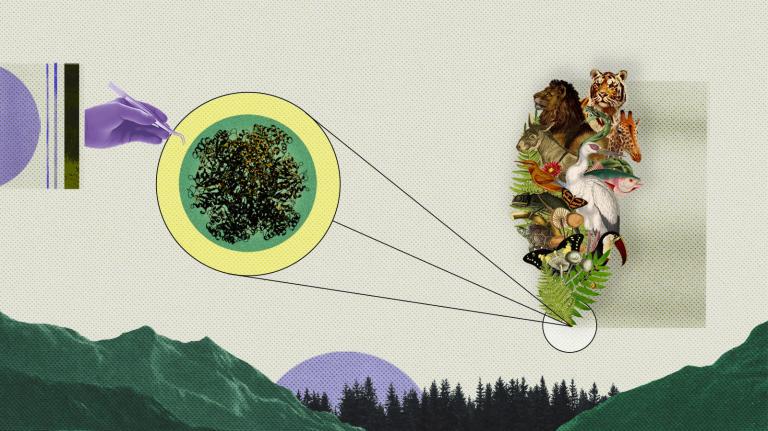This transcript has been edited for length and clarity.
In the 1980s, a group of scientists predicted climate change with uncanny accuracy. Those scientists happened to work for Exxon.
Many fossil fuel companies knew about climate change well before the general public did.
But a recent review of dozens of internal Exxon documents from the 1970s and ‘80s, found company scientists knew a lot more than the basics of what greenhouse gasses were doing to the planet.
To understand what Exxon knew and how they knew it, let’s go back to 1977. This was an important moment in history: Scientists and government agencies were just starting to seriously study climate change. Researchers knew the basics — carbon dioxide levels were rising, and the Earth would most likely get warmer — but there were still a lot of unanswered questions. And Exxon, a major fossil fuel company with a skilled research department, decided to spend millions of dollars to answer those questions for themselves.
If you read historical documents or interviews from this time, you get the sense that Exxon scientists were genuinely interested in understanding climate change — even a bit idealistic! A top company scientist at the time envisioned Exxon at the center of a global climate research project “aimed at benefiting mankind.”
Exxon believed that good climate science would only help their business. You see, the company had been watching another industry facing another environmental crisis.
Just a few years prior, the world was starting to get anxious about the vanishing ozone layer. Certain chemicals found in aerosol sprays and refrigerators were damaging the part of the atmosphere that protects earth from the sun’s most harmful rays. And so the government decided to ban spray cans that used those chemicals.
Exxon’s top scientists saw the ban’s impact on the chemical industry. And 1979 they wrote,
“When Freon based [sic] aerosol containers were baned [sic], the chemical industry was also caught unprepared. If the industry had anticipated the problem, it could have been working on substitute propellants.”
In much the same way, Exxon thought that if they really understood the science behind climate change, they might uncover solutions, nuances, or new business opportunities that could help the company in the long run. So they assembled a team of atmospheric scientists. They built a high-tech climate lab on one of their oil tankers to help study CO2 in the ocean. And they invested in cutting-edge computer models to predict the future global temperatures.
Exxon scientists’ first climate models were published privately in 1982, years before the general public was aware of climate change. Exxon predicted the climate would warm just under half a degree celsius between 1980 and 2000. And by the early 2000s, they found the earth could be warm enough to objectively detect climate change. (Scientists officially detected climate change in 1995). Over the next few years, Exxon’s climate predictions kept getting better.
By the late 1980s, climate change was starting to enter the public conversation.
NASA scientist James Hansen famously warned Congress about climate change in 1988. Almost immediately, Exxon changed course.
Less than two months after James Hansen’s testimony, Exxon laid out its strategy in an internal memo: In order to prevent the “noneconomic development of non-fossil fuel resources,”
they instructed their staff to “emphasize the uncertainty in scientific conclusions regarding the potential enhanced greenhouse effect.”
For the next two decades, Exxon stuck to that strategy of emphasizing climate uncertainty. All the while, Exxon scientists continued to quietly study and predict climate change trends in academic journals. So, Exxon was simultaneously calling climate science “sheer speculation” and publishing peer-reviewed climate models showing an increasingly warmer world.
How good were those decades-old Exxon models? Recently, a group of outside researchers compared each Exxon climate model to real-world climate records, scoring them from 0 to 100. And they found that, on average, Exxon’s predictions were 72 percent accurate! Exxon’s best prediction, published in 1985, was 99 percent accurate — more accurate than predictions from the world’s top independent and government scientists at that time.
How do you judge a climate model’s accuracy?
This research adds to a story: For years, one of the best climate models in the world came from an oil company. And then, they spent the next several decades discrediting it.

